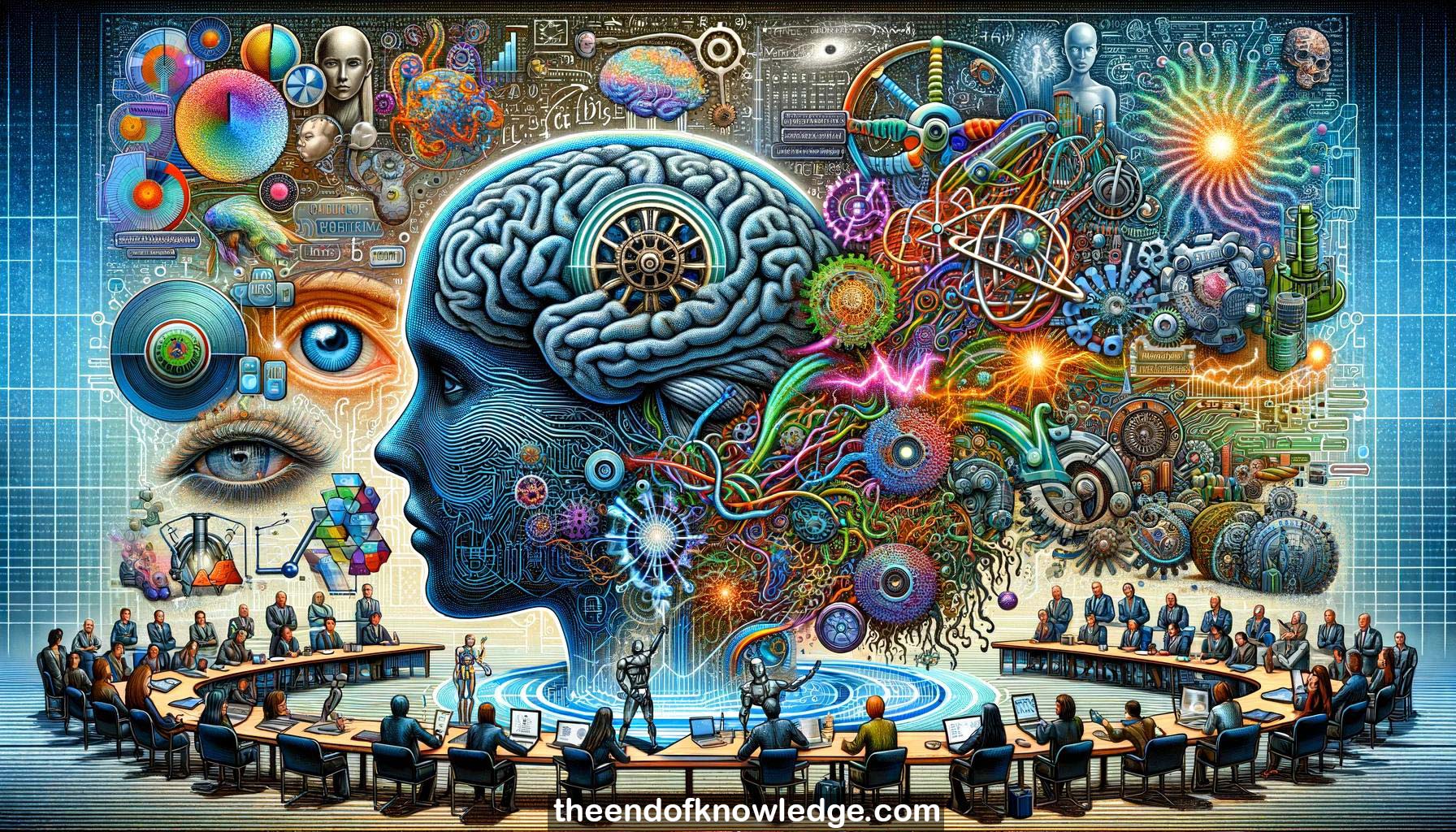 >
>
Concept Graph & Resume using Claude 3 Opus | Chat GPT4 | Gemini Adv | Llama 3:
Resume:
1.-The NeuroSymbolic Generative Models workshop aims to combine neural networks with symbolic approaches for more robust reasoning, interpretability, and out-of-distribution generalization.
2.- Claude Gallett opened the workshop by explaining the program schedule and logistics for the hybrid in-person and online event.
3.-Matthias Niepert presented on incorporating discrete symbolic structures and algorithms into machine learning models for better generalization and interpretability.
4.-Incorporating domain knowledge like symmetries and conservation laws into ML models for physical systems leads to better results than pure deep learning.
5.-Integrated algorithmic components like shortest path solvers into end-to-end differentiable ML pipelines allows learning the algorithm and parameters jointly.
6.-Discovering explanatory discrete structures from data, such as in gene regulatory networks and PDEs, is an exciting application of neurosymbolic AI.
7.-Online spotlight talks covered diverse topics like integrating knowledge graphs with language models, open-ended discovery of diverse programs, and object-centric scene generation.
8.-In-person spotlight talks spanned symbolic methods for graph generation, neurosymbolic deductive reasoning, editing abstract object representations, and amortized probabilistic inference.
9.-Danny Tarlow discussed the paradox of transformer language models learning to reason from data and whether reasoning can emerge or requires explicit algorithms.
10.-Integrating algorithmic components into deep learning architectures for program analysis can provide scalable models that perform multi-step reasoning.
11.-Constrained language generation using tractable probabilistic circuits to guide autoregressive language models outperforms pure deep learning approaches.
12.-Judy Fan presented cognitive science research on how people use visual and linguistic abstraction to communicate, and computational models of these abilities.
13.-Bridging abstractions link sensory processing to motor execution to enable flexible multimodal communication behaviors aligned with communicative goals.
14.-Neuro-symbolic models can potentially account for the emergence of shared symbolic abstractions that expand over time from neural architectures.
15.-Key challenges include the symbol grounding problem, accounting for non-stationary sets of symbols, and identifying useful inductive biases to build into models.
16.-Tuan Anh Le framed neuro-symbolic generative models as universal probabilistic programs with neural nets and symbolic components to aid generalization from limited data.
17.-Inference compilation allows amortizing inference in universal probabilistic programs by coupling program execution with an autoregressive recognition model.
18.-Wake-sleep methods are effective for learning the parameters of probabilistic programs but face challenges with high variance gradients and the tighter bounds problem.
19.-Drawing Out of Distribution (DUDE) is a neuro-symbolic model integrating execution-guided inference and a library of strokes that achieves out-of-distribution generalization on drawings.
20.-Guy Van den Broeck demonstrated a paradox in transformer language models appearing to "learn reasoning" that points to a mismatch between test accuracy and true reasoning ability.
21.-Constrained language generation using tractable probabilistic circuits to guide intractable autoregressive language models guarantees constraint satisfaction and improves quality.
22.-Semantic loss functions derived from logical constraints and computed using tractable circuits can train neural networks to make semantically valid structured predictions.
23.-Panel discussion: No need for rigid definitions of "neuro-symbolic AI". Focus should be on useful inductive biases, modularity, and emergence of reasoning.
24.-Possible applications: Program understanding/synthesis, controlling generative models, 3D scene understanding, design tools, incorporating broader invariants into models seamlessly.
25.-Connecting language models to symbolic tools enables opportunities like increased reliability but also risks if connected to decision-making systems. Could enhance education.
26.-Biological evolution of reasoning likely driven by functional pressures for coordination as well as physical constraints. Modern AI may surpass human cognitive limitations.
27.-Largest gaps between neuro-symbolic proofs-of-concept and real-world applications involve scaling challenges. Tool use with language models is closing the gap.
28.-Tivadar emphasized the significant work required to organize a successful hybrid workshop and thanked everyone involved in making it happen.
29.-The workshop aimed to bring the community together for in-person interactions after two years of virtual events during the pandemic.
30.-Tivadar closed by thanking the program committee, authors, invited speakers, ICLR workshop chairs, and Slides Live for their crucial contributions to the workshop.
Knowledge Vault built byDavid Vivancos 2024